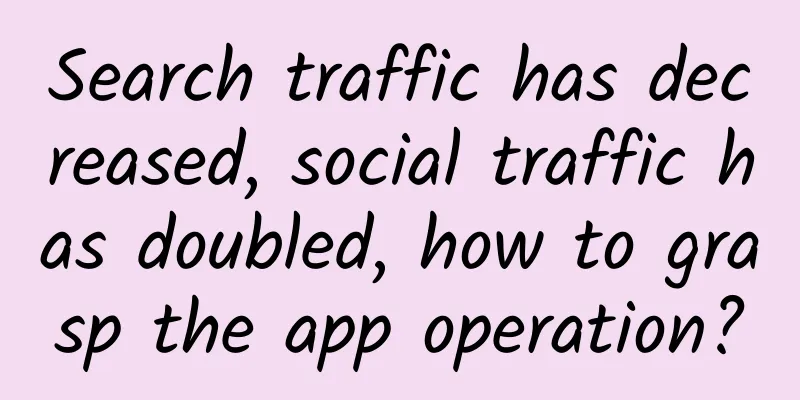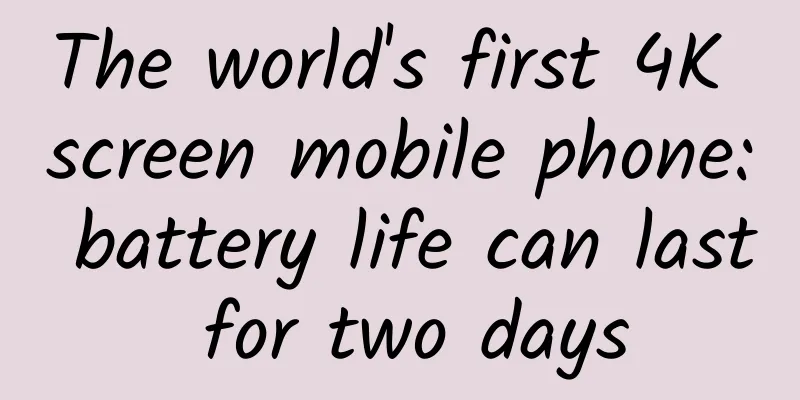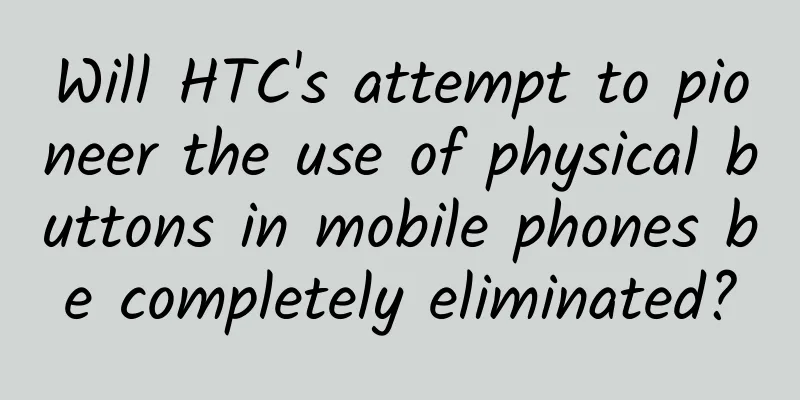Search traffic has decreased, social traffic has doubled, how to grasp the app operation?

|
Trend: Search traffic declines, social traffic doubles, and people spend more time on social media
I believe everyone has felt that recently, more and more of our information comes from social media, not search or news. In fact, the information we get from social media is faster and more relevant than from the news. This is data from a foreign company that does social traffic analysis. It's from December last year, and this year's data is not available yet. We can see that the traffic from social media has more than doubled compared to the previous year, while the traffic from search has begun to decline. It is estimated that this ratio will be closer this year. We can also generally feel that many products or apps we come into contact with are not first contacted from search or some channels. If there is a problem, we don't search on Baidu first, but directly shout it out in Moments, because behind social media is not only information, but also people. This trend has also led to a change in traditional marketing methods. In the past, when a company wanted to launch a product, it would promote its product through some channels or advertising after making the product. Users who needed it would buy it, and loyal users were the largest part of the funnel model. Now, as social media is becoming more and more developed, more and more companies are paying more attention to, or need to pay more attention to, word-of-mouth communication from users, maintaining the first batch of seed users and loyal users, and acquiring more users through their word-of-mouth communication and social media communication, and then building channels to do marketing.
The Iron Triangle of Word-of-Mouth Communication: Products, User Relationships, and Social Media
How to spread word-of-mouth among users, from a strategic and tactical perspective, mainly lies in this picture. This picture is quoted from the book "Sense of Participation" recently published by Xiaomi co-founder and vice president Li Wanqiang. As we all know, Xiaomi is a company that has grown rapidly in recent years and has achieved the best social marketing. Indeed, there are many things worth learning from and even reflecting on, such as word-of-mouth communication. In fact, whenever we talk about operations, we must not be separated from the product, and the product is always the core. So when you see the word-of-mouth iron triangle here, the product is the engine at the bottom, the user relationship is on the right, and the accelerator on the left is social media. From the perspective of Tao and Shu, the inner triangle is Tao and the outer triangle is the level of Shu. Let's talk about the inner level first, that is, you need to realize that the product is the core, focus on maintaining user relationships, and make full use of social media. How to do these points well? The corresponding ones are the outer parts. 1. First of all, we must ensure that the product is useful and easy to use, and continuously improve the user experience. It is very important to strive to exceed user expectations. Even if it cannot be achieved immediately, subsequent improvements must be made to achieve it, which is also the basis for the following links. 2. Pay attention to user relations. User relations are also quite special. Before this, many companies thought that once the product was sold, it was done. They thought that if they did not contact them again, they would be in trouble. They did not attach importance to user relations at the strategic level. In fact, once this direction is set, it is relatively simple to implement. It means communicating more with users, focusing on refining user feedback, and improving user complaints. The 10/100/1000 rule of QQ Mailbox also talks about this. 3. Make full use of social media. In social media, we should be content-oriented, regard materials as lifelines, open up more user participation nodes, and focus on interactive design. We will also expand and combine some cases to talk about this later. Improving the dissemination rate: content, materials, and open participation nodes Xiaomi is the first company to use social media as its main battlefield. It has made different attempts on different platforms and has achieved amazing results. Many companies only use social media as a small auxiliary means and only assign one person to be responsible for updating and maintenance. This is not enough to fully utilize the power of social media. There are many points involved in social traffic. Here I will put them into Split it into traffic within the application and traffic outside the application. There is a very simple formula: sharing amount = number of users * sharing rate, but it is often overlooked by many people. That is, after you have introduced users through some external channels, you should pay attention to how to increase the user's sharing rate. For example, if your sharing rate increases by 5 times, then the traffic you obtain will increase by 5 times. How to increase the user sharing rate and improve the user's word-of-mouth communication? Content, materials, and participation nodes are very important. The importance of content is not much to say, but materials are ignored by many companies, especially start-ups. Many companies spend 80% of their time on various channels and only spend less than 20% on materials. But in fact, if you spend more time and effort on content and materials, the overall effect will be improved a lot. Regarding participating nodes, for example, before Xiaomi, the e-commerce ordering process ended after the order was placed. However, based on the tactical idea of opening multiple participating nodes, Xiaomi generated a Weibo post with product pictures for users after the order was placed. The material was also quite clever, with Mi Rabbits with different expressions, which increased the number of shares at once and drove millions of additional disseminations. In addition to opening up participation nodes and content, activities are also an important part of strengthening user participation. To continue using tactical analogy, then activities are a positional battle! Productization of activities: fighting a good battle of position Many developer operators may have the same feeling. When the company launches new products and new features, especially during certain festivals, they will launch some small activities. There are two common problems in doing activities. One is that they do not pay enough attention and do not concentrate enough resources. The second is that they treat the activities as pages instead of products.
When Xiaomi was first launched, most of its users were still on the forum. Lei Jun talked to Li Wanqiang about how to attract some users, but without spending a penny on advertising. Later, the planning team organized an event on Weibo, asking users to show off their previously used phones. And they made a small tool specifically for this purpose to get users involved to a greater extent. In Xiaomi's words, providing users with sufficiently convenient tools will generate greater communication potential! This event was also Xiaomi's first attempt at productizing its activities. It was forwarded more than 100,000 times within the first day of its launch. Even now, there are still users participating, with more than 1,700 people participating in the discussion, which was a great battle of position. After this, Xiaomi has become more determined to productize events, and has held events frequently to wage positional warfare. As for how to conduct events, different platforms have different ways of doing things. I have briefly sorted out and summarized the commonly used types of events here. Common external drainage methods For apps, the traffic mentioned above includes external traffic and internal traffic. Here, I divide activities into out-of-app activities and in-app activities. There are several out-of-app activities and traffic diversion methods as follows. 1. Send messages directly through WeChat and Weibo. It is also recommended to use some H5 tools to optimize the materials and add some interactive elements, which will have a better effect. 2. Create some interesting content information to attract users to spread it. For example, in the third picture below, I have seen it in WeChat Moments. It generates NBA data for each user. Users find it interesting and share it. We can see that there is an app advertisement below. However, it is recommended that the content of this test based on a certain interest segment should be consistent with your audience. 3. Set up activities with gifts. This is quite common on Weibo, and the effect is amazing if used well. This needs to be coordinated with content planning and some promotion to attract traffic. After a friend's app was launched, he teamed up with a popular cartoonist on Weibo to do an activity to send 100,000 postcards to you by forwarding it. To get the postcards, you need to download the app and fill in the address on it. This activity brought tens of thousands of downloads and quickly accumulated the first batch of users. 4. Use mini games to spread your achievements. Games are a more interactive content medium. Surround the crazy cat and don’t step on the white blocks are good examples. 5. Open a public account for the app. Because WeChat public accounts are light and relatively easy to attract traffic through content, you can first use the public account to provide content and services, and then add an app download entrance. In fact, many apps will first use public accounts to attract users before launching.
Some of the examples mentioned above can be seen in the picture above. The picture in the middle is a WeChat h5 activity of Weijing Tourism. What is more interesting is that it transforms common invitation rewards, such as giving a 5-yuan consumption voucher for inviting a friend, into a more interesting and interactive bargaining scene. More than 100,000 people participated in the activity, and the effect was very good.
Common in-app traffic generation methods In-app activities are often easily overlooked. We have also seen that many apps do not make full use of the scenarios within the app, wasting a lot of in-app sharing traffic. This is actually a pity. The common ways to use in-app social sharing traffic are as follows: 1. Create interesting data in the app for users to share. For example, the WeChat phone book launched a while ago will tell you the distance of the call after making a call. More than 80% of people will digitize user behavior, and many users will share it. 2. Hold interstitial activities within the app. As shown in the picture on the right, this app held an interstitial activity during the World Cup, adding some activity materials, which was very helpful in improving user participation. 3. Set up in-app sharing reward activities. Our products also provide such tools, which will be discussed later. It is to give points after sharing to increase the sharing rate. 4. Give users red envelopes and let them send them out. This is a little different from sharing and sending. You are given a red envelope first and then you are asked to send it out. This philosophy of giving first and then gaining is fully utilized. The effect of this will be several times better than sharing first and then sending. Didi Taxi has done a very uninhibited way of sharing red envelopes. From Didi Taxi's endless joy of sending red envelopes, we can see that the effect is worth it. This is also worth careful study. 5. Import friend relationship chains. This is something that many applications overlook and is not easy to do well. Happy Match has done a good job in this regard, such as introducing friend rankings and inviting friends to help; Maimai also has a function that allows users to invite friends to help them authenticate. If the friend relationship chain is used well, it may lead to exponential growth. For example, Kaixin.com and Facebook imported the friend chain of user emails, which brought in very fast user growth.
Another relatively new example is a small tool that Baidu created after the subway reduced its fares. It was done very quickly. There are also some similar small tools that are modified according to hot topics. When doing similar activities, whether you can fully utilize the potential energy at the time node will have a huge difference in the effect. In addition, you should also pay attention to the novelty of the form. In terms of enhancing participation, we have just emphasized content, materials and activities, but there is actually a kind of material that is more exquisite and often appears in Xiaomi's activities, that is, various gifts, such as Xiaomi mobile phone F code and Mi Rabbit, so we recommend putting some gifts in the activities, so that the effect of enhancement is also very detailed, and sometimes even immediate. ***To sum up, the main factors for gaining more users through social media are to focus on the relationship of the word-of-mouth triangle, pay attention to content and materials, open up participation nodes, enhance user participation, strengthen it through activities, fight a good positional battle, and execute the activities as products. In this way, we can sort out the principles and techniques, and win more users in a battle of positions! I hope this sharing can be helpful to everyone. This article is based on the sharing of Youtui CEO Li Gan at the forum "Youtui Helps Social Traffic - Detailed Discussion of Social Traffic Operations". It has been edited. Please check the original text: http://youtui.mobi/cms/content/show/80 |
>>: Umeng launches data factory strategy and releases in-app social "micro community"
Recommend
List of 6 soup-drinking habits that are harmful to your body. Many people do the first one every day!
Speaking of soup Many people think All the nutrie...
Why can't iPhones be assembled in the United States? They don't even have all the screws
Even though U.S. President Trump personally warne...
How to build a user “retention” system?
In order to attract more users, many companies ar...
Li Bin talks about the price reduction of Model Y. Tesla wants to become Volkswagen, while NIO is benchmarking "BBA"
On New Year's Day 2021, Tesla dropped a "...
The famous desert "life-saving tree" is also a green "oxygen pump"
In the boundless Gobi Desert, you can occasionall...
Lasting for more than 140 years and involving three generations of scientists, what exactly is this longest experiment in history studying?
Seeds are everywhere in our daily lives, from pea...
Don’t confuse “vision” and “field of vision”
The ability of the eyes to distinguish the image ...
4 major live broadcast scripts, just apply them and you will be a hit!
With the popularity of live streaming e-commerce ...
Branding: How to write a proposal?
As a third-party company, when we want to BD a ne...
EK releases Intel 750 hard drive water cooling head
HDD mechanical hard disks use high-speed motors, ...
The era of e-sports has arrived. The first TV game competition platform "Competition Platform" has been tested for the first time on the entire network
Game competition is one of the ways for players t...
9 factors that affect the quality of Baidu bidding keywords!
1. Relevance (make sure that no matter which keyw...
Analysis of the routines of community operation to detonate traffic pool
Recently, many friends are worried about how to m...
If you do insurance marketing like this, closing deals will no longer be difficult!
When selling insurance, we always encounter vario...
How should the boss spend 10 million? Mainstream promotion channel combination strategy
From this article, you can learn about the mainst...









